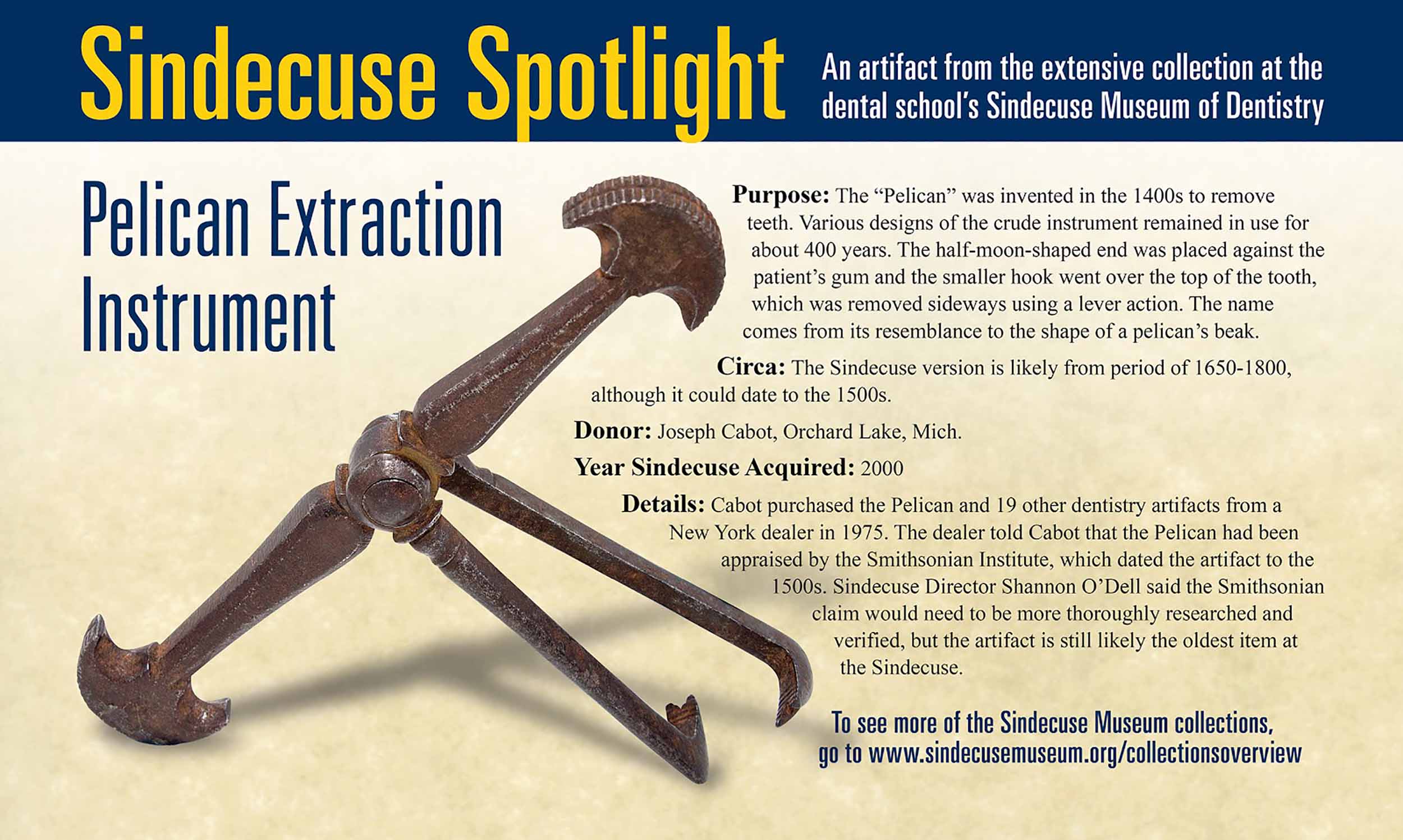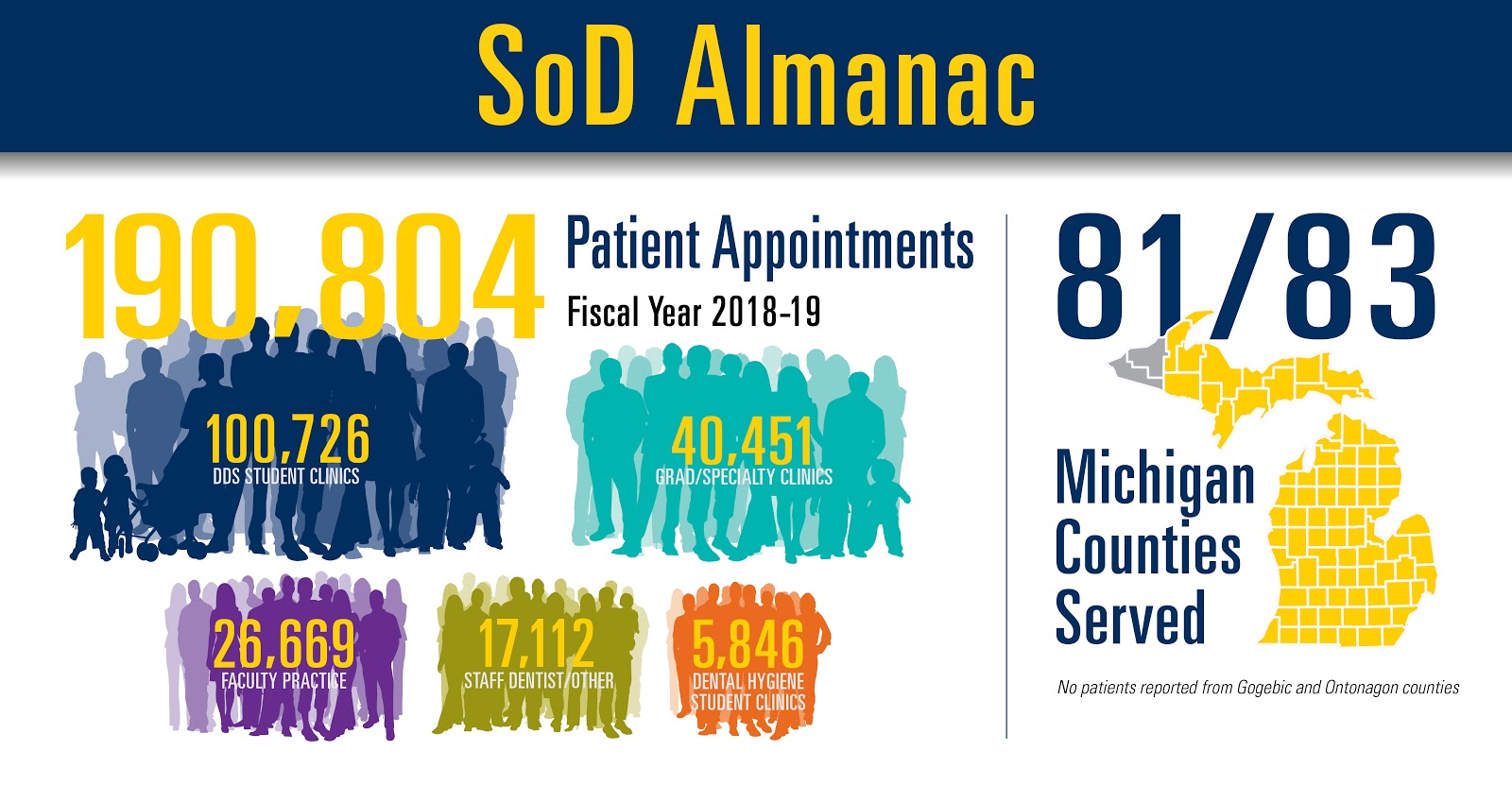
Charlotte Wyche (center) displays the original 1959 edition of the Wilkins textbook next to the new, larger 13th edition. At left is Jane Halaris with the companion workbook she edited. At right is Jennifer Cullen, who co-authored a chapter in the new edition.
Current and former Dental Hygiene faculty contribute to iconic textbook series
A trio of current and former Dental Hygiene faculty members at the School of Dentistry are important contributors to the latest edition of an iconic dental hygiene textbook used across the country and around the world.
The faculty helped revise and edit the 13th edition of “Wilkins’ Clinical Practice of the Dental Hygienist.” First published in 1960 by Esther M. Wilkins, the textbook became the standard for dental hygiene education and has been updated every few years through several generations of dental hygiene students.
The U-M dental hygiene connections to the new edition are:
- Charlotte Wyche, an alumna of the U-M dental hygiene program and former adjunct clinical lecturer for the program. She is one of three authors of this latest edition of the textbook, the first since Wilkins died in 2016 at age 100.
- Jane Halaris, a former adjunct clinical lecturer in the U-M DH program. She has taken over as lead editor of an accompanying “Active Learning Workbook” that supplements the Wilkins textbook.
- Jennifer Cullen, an alumna, clinical lecturer in the DH program and director of its Degree Completion Program. She co-authored a Wilkins book chapter, with Wyche, on “Dental Hygiene Care in Alternative Settings.”
Wilkins became a beloved figure in the professional dental hygiene community over the course of her lifetime. She earned a dental hygiene certificate from the Forsyth School in Boston in 1939 and worked as a hygienist in the first years of her career. After finishing her DDS degree in 1948 from Tufts University in Medford, Mass., she founded the dental hygiene program at the University of Washington School of Dentistry in Seattle in 1950. As she developed the curriculum and taught courses there, she began writing hand-outs for her students, eventually accumulating such a large collection that it was suitable for publishing in book form. After the initial edition was released in 1960, Wilkins updated the content every few years, with contributions from dental hygiene faculty at U.S. colleges and universities. The English version has been translated into many other languages, including Japanese, Italian, Korean, Portuguese and Canadian French. In the early 1960s, Wilkins returned to Tufts where she taught as a professor of periodontics in the university’s dental school for 45 years, until retiring in 2011. She contributed to the editing of her book through its 12th edition, released in early 2016 when she was 99 years old.
Wyche began working with Wilkins for the 6th edition in the mid-1980s, gradually assuming more writing and editing responsibility as each edition was updated. For the ninth edition, Wyche created a companion workbook for the textbook and it, too, has been updated with each new edition. After Wilkins’ death in 2016, another longtime contributor, Linda Boyd of the Massachusetts College of Pharmacy and Health Sciences, became lead author, with Wyche and Lisa Mallonee Texas A&M University as co-authors. The three worked with about 50 contributors from around the country to revise, streamline and edit the 13th edition over a three-year period. Their three names are listed as authors on the cover – the first time in the book’s 60-year history that anyone other than Wilkins is listed as author.
Wyche has three degrees from the U-M dental school – a certificate in DH in 1979 when it was a two-year program, a BSDH in 1989 and a MSDH in 1991. In the early years of her career she worked in private practices in Dearborn and Ann Arbor. After earning her MSDH, she worked at the U-M dental school as a radiology technician and taught clinical radiology for several years. In 1994, she joined the dental hygiene faculty at the University of Detroit Mercy, teaching there for 13 years until retiring in 2007. She then returned to the dental hygiene program at U-M as an adjunct faculty member until 2014. She helped develop and teach the community-based oral health courses for both the on-line bachelor’s degree completion and master’s degree programs. She has long been active in the national and international network of professional dental hygiene organizations.
Wyche invited Jane Halaris, a former faculty colleague at Detroit Mercy, to join the Wilkins franchise for the 12th edition. Halaris wrote a chapter for the textbook and joined Wyche in editing the accompanying workbook. For the new 13th edition, Halaris became the lead editor of the workbook, supported by Wyche. Halaris says her job could be described as chief problem-solver as she wrote, edited and managed revisions of the workbook to match the new textbook chapters. She coordinated changes and deadlines for contributing writers, working closely with the Wilkins publisher, Jones and Bartlett Learning.
Like Wyche, Halaris’ extensive experience in both clinical and teaching aspects of the profession, as well as leadership roles in DH and state healthcare organizations, qualified her to make the move to textbook editing. Halaris was an adjunct faculty member in the U-M Dental Hygiene program from 2012 until she retired in 2017. She taught in the online Degree Completion Program and helped develop and taught in the online Master’s program, as well as in undergraduate classes. Prior to joining U-M, she taught at Detroit Mercy for nine years, earning both her bachelor’s degree in DH and her Master’s in Curriculum and Instruction during that time. The first 29 years of her career she practiced clinical dental hygiene in general dentistry offices in Michigan.
Clinical lecturer Jennifer Cullen called on her background working in community and public health as she wrote the Wilkins chapter on dental hygiene care in alternative settings. The chapter examines the versatility that dental hygienists must develop in an expanding healthcare environment that includes non-traditional settings and working with families, professional caregivers, institutional administrators and a wide variety of medical and social service providers in any given community. In addition to discussing updated technologies and equipment for remote practice, Cullen also focused on her interest and experience in advocating for vulnerable and older adults. Hygienists working with patients limited to their homes, for example, need to support their caregivers while also being aware of issues related to neglect or abuse of vulnerable adults.
“I think my work with local social service agencies that serve vulnerable and older adults helped me step outside of the dental bubble and gain a unique perspective in understanding both personal and community-level barriers some individuals face in participating in not just the healthcare system, but society,” Cullen said.
Cullen said Wyche has been one of her mentors since Cullen completed the E-learning Degree Completion Program at U-M in 2012. Accepting Wyche’s offer to write a chapter in the Wilkins book was yet another learning opportunity to work with her mentor and a chance to further examine a topic she is passionate about, Cullen said.
Janet Kinney, director of the U-M Dental Hygiene Program, said it is significant to have three authors with U-M connections working on the textbook that the program has used for decades. “It is a tremendous responsibility to teach the next generation of dental hygienists, and I am extremely proud that we have so many of our faculty who have accepted this role,” she said.
Wyche said her long friendship with Esther Wilkins and association with the textbook franchise has been a very rewarding part of her career. Working on the book series has allowed her to become part of the extensive network of dedicated dental hygienists around the country and internationally. In her travels to professional conferences and meetings, she often witnessed the widespread admiration Wilkins received from hygienists, even in countries such as Japan, Australia, Italy and Spain. “I can tell you she enjoyed ‘rock star’ status with dental hygienists from all over the world,” Wyche said.
Wilkins’ commitment to maintaining the excellence of her textbook series was evident to the very end of her life, which came three days after her 100th birthday in December 2016. Wyche was among a group who had dinner with the distinguished hygienist at her residence in New Hampshire on the eve of her centenary birthday. The 12th edition of her textbook had come out earlier that year, so revisions for the 13th edition weren’t yet underway, but Wyche recalls Wilkins discussing and asking questions about preparations for the next edition.
“Although Esther went on to become a dentist, and a periodontist, she was first and foremost a dental hygienist,” Wyche said. “I believe that was ultimately more important to her than any other designation.”




